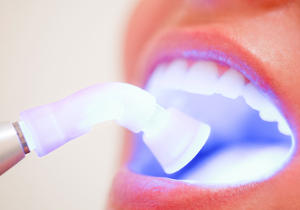 Dental bonding, also referred to as composite bonding, is a procedure in which a putty-like, tooth-colored resin is applied to the tooth and hardened with a special light. This process ultimately “bonds” the material to the tooth creating a renewed appearance. Although not as durable as veneers, bonding can be a more affordable alternative to porcelain veneers for enhancing one’s smile or for performing most types of chipped tooth repair.
Dental bonding, also referred to as composite bonding, is a procedure in which a putty-like, tooth-colored resin is applied to the tooth and hardened with a special light. This process ultimately “bonds” the material to the tooth creating a renewed appearance. Although not as durable as veneers, bonding can be a more affordable alternative to porcelain veneers for enhancing one’s smile or for performing most types of chipped tooth repair.
When is Dental Bonding Considered?
Dental bonding is an appropriate consideration for the following:
- Repair tooth decay by filling cavities with composite resins
- Repair chipped teeth or repair cracked teeth
- Cover and improve the appearance of discolored teeth
- Close gaps and spaces between teeth
- Reshape teeth for improved appearance
- Alternative to amalgam fillings for improved cosmetics
- To protect exposed roots of teeth with receding gums
What’s the Process for Tooth Bonding?
- Preparation. The good news is unlike other cosmetic or restorative dental procedures, dental bonding requires little or no advance preparation. In fact anesthesia is not usually needed unless the bonding is being used to fill a cavity in a decayed tooth. A shade guide is used by the dentist to create the most natural composite resin color to match the color of your existing teeth.
- Bonding. Next, the enamel surface of the tooth is roughened and a conditioning liquid applied to help the bonding material adhere to the tooth. Once the liquid sets, the tooth-colored, putty-like resin is applied and shaped. A special UV light or laser is then used to harden the resin material. After hardening, the resin is further trimmed, shaped and polished to attain a natural appearance and the desired sheen.
What Are the Advantages and Disadvantages of Dental Bonding?
Advantages: Dental bonding is among the easiest and least expensive of cosmetic dental procedures. Unlike veneers and crowns, which are essentially customized tooth coverings that must be created in a lab, bonding usually can be done in one office visit unless several teeth are involved. Total completion time for dental bonding is 30 to 60 minutes per tooth. Also unlike veneers and crowns, during the prep phase bonding requires less removal of tooth enamel. Lastly, anesthesia is usually not required.
Disadvantages: Dental bonding material is somewhat stain resistant; however, it does not resist stains as well as porcelain veneers and crowns. Bonding materials also do not last as long nor are they as strong as more durable restorative procedures, such as crowns, veneers, or amalgam fillings. Additionally, bonding materials can chip and break. For these reasons bonding is often suggested for front teeth where lower bite pressures exist and the greatest cosmetic benefit can be attained.
Is Special Care Required for Bonded Teeth?
Bonded teeth do not require special care, but due to the possibility of chipping it is recommended to avoid chewing on hard objects or hard foods like ice.
Dental bonding has a lifespan of anywhere from 3 to 10 years before requiring touch-up or replacement. As with any dental care regimen the goal is to follow good oral hygiene practices. Brush teeth at least twice a day, floss at least once a day, and see your dentist for regular professional check-ups and cleanings.
If you are considering a cosmetic restoration such as dental bonding, the dentists at Gover and Gover look forward to the opportunity to consult with you on the best approach to achieve the smile you’re looking for.
